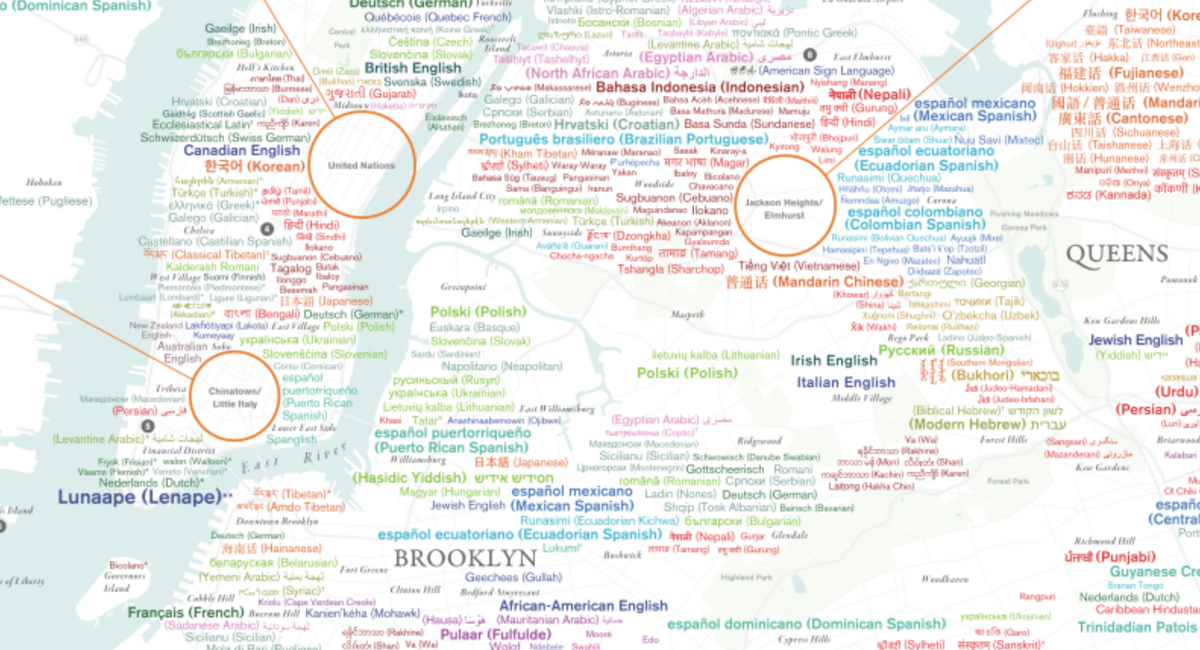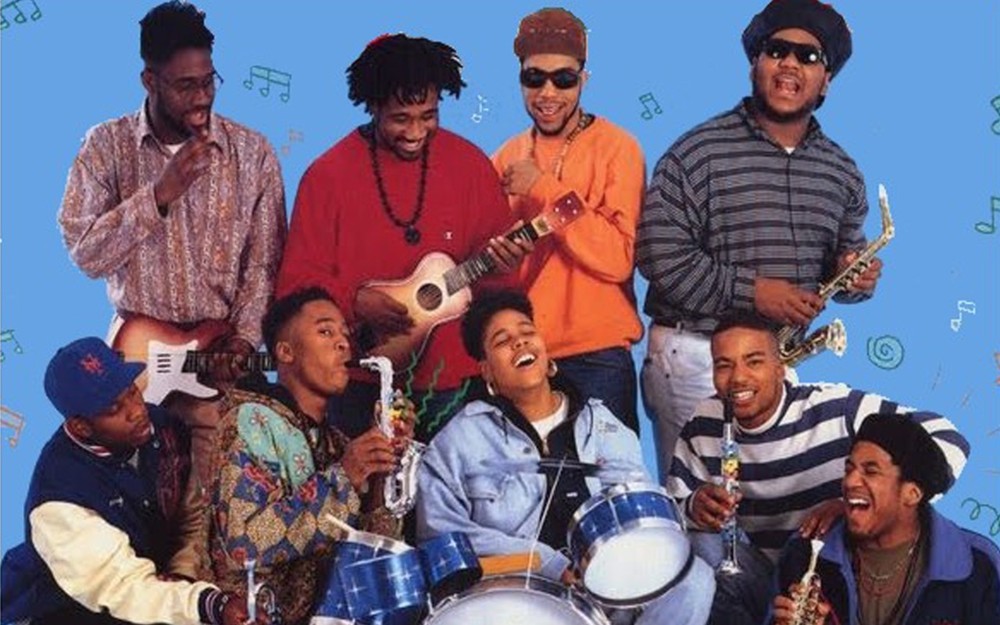get these nets
Veteran
Video from 2010, old video but new article
This map shows the 700 languages spoken in NYC
From Kurtöp to Haketia and Scottish Gaelic, we're clearly a melting pot of languages and cultures.

April 19, 2021
We all know that New York is a melting pot—but this new interactive map by the Endangered Language Alliance really puts things in perspective.
The non-profit, which documents and supports "linguistic diversity and endangered languages in New York City and beyond," put ten years of work into this visual showcase of the city's linguistic diversity. The map highlights almost 700 lingos and dialects "confirmed to nearly 1,200 significant sites, including neighborhoods, community institutions, restaurants and other locations where there is, or was, at least one speaker."

Keep in mind that the highlighted vernaculars go beyond the sorts of languages you're used to hearing while walking around the city's streets: From Abruzzese (a Southern Italian dialect) to Buginese (Indonesian/Malaysian) and Akan (Ghana), it all gets very specific.
According to the data, "approximately 38% of the languages shown are from Asia, 24% from Africa, 19% from Europe, 16% from the Americas and the rest from Oceania and the Pacific."
On the ELA site
Languages of New York City Map
you will find an interactive map
This interactive map is the product of more than a decade of research from the Endangered Language Alliance, a group that seeks to document and preserve smaller, minority, and Indigenous languages across New York City.
Each of the 1,200 dots on the map either reflect a conversation with someone knowledgeable about one of the more than 700 existing languages spoken, or a historical data point that delves into the linguistic history of a part of the New York region. Every dot comes with heaps of context, and in some cases, video of native speakers.
So you might listen to a man in deep eastern Queens tell a story about his childhood in his native Amuzgo (also called Nomndaa, spoken around Oaxaca, Mexico), or read about how 3,000 German refugees speaking Palatine German were stranded on Governors Island in 1710 (among their numbers: John Peter Zenger).
And the highlighted dialects go beyond the sorts of languages you're used to hearing while walking around the city's streets:
This map shows the 700 languages spoken in NYC
From Kurtöp to Haketia and Scottish Gaelic, we're clearly a melting pot of languages and cultures.

April 19, 2021
We all know that New York is a melting pot—but this new interactive map by the Endangered Language Alliance really puts things in perspective.
The non-profit, which documents and supports "linguistic diversity and endangered languages in New York City and beyond," put ten years of work into this visual showcase of the city's linguistic diversity. The map highlights almost 700 lingos and dialects "confirmed to nearly 1,200 significant sites, including neighborhoods, community institutions, restaurants and other locations where there is, or was, at least one speaker."

Keep in mind that the highlighted vernaculars go beyond the sorts of languages you're used to hearing while walking around the city's streets: From Abruzzese (a Southern Italian dialect) to Buginese (Indonesian/Malaysian) and Akan (Ghana), it all gets very specific.
According to the data, "approximately 38% of the languages shown are from Asia, 24% from Africa, 19% from Europe, 16% from the Americas and the rest from Oceania and the Pacific."
On the ELA site
Languages of New York City Map
you will find an interactive map
This interactive map is the product of more than a decade of research from the Endangered Language Alliance, a group that seeks to document and preserve smaller, minority, and Indigenous languages across New York City.
Each of the 1,200 dots on the map either reflect a conversation with someone knowledgeable about one of the more than 700 existing languages spoken, or a historical data point that delves into the linguistic history of a part of the New York region. Every dot comes with heaps of context, and in some cases, video of native speakers.
So you might listen to a man in deep eastern Queens tell a story about his childhood in his native Amuzgo (also called Nomndaa, spoken around Oaxaca, Mexico), or read about how 3,000 German refugees speaking Palatine German were stranded on Governors Island in 1710 (among their numbers: John Peter Zenger).
And the highlighted dialects go beyond the sorts of languages you're used to hearing while walking around the city's streets:

 shyt went horrible as it was a big communication gap smh
shyt went horrible as it was a big communication gap smh



 Wow 700 I’m pretty sure they could have cut those numbers in half seeing as dialects are usually mutually intelligible especially under a big parent language
Wow 700 I’m pretty sure they could have cut those numbers in half seeing as dialects are usually mutually intelligible especially under a big parent language